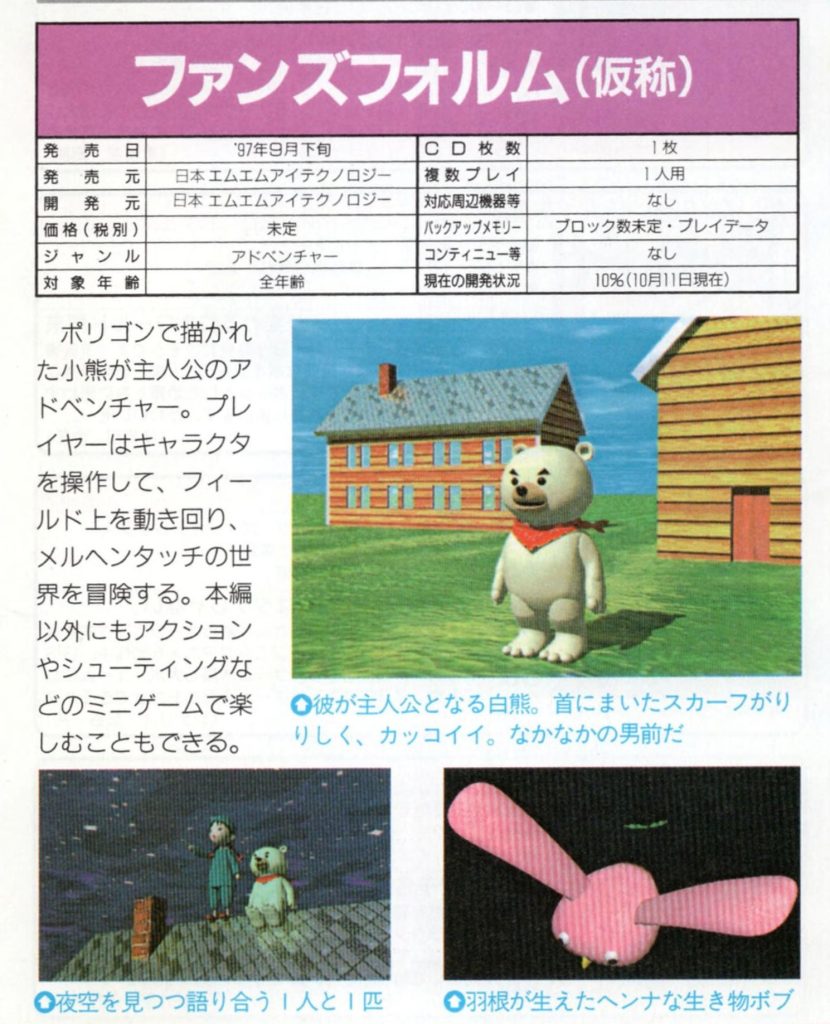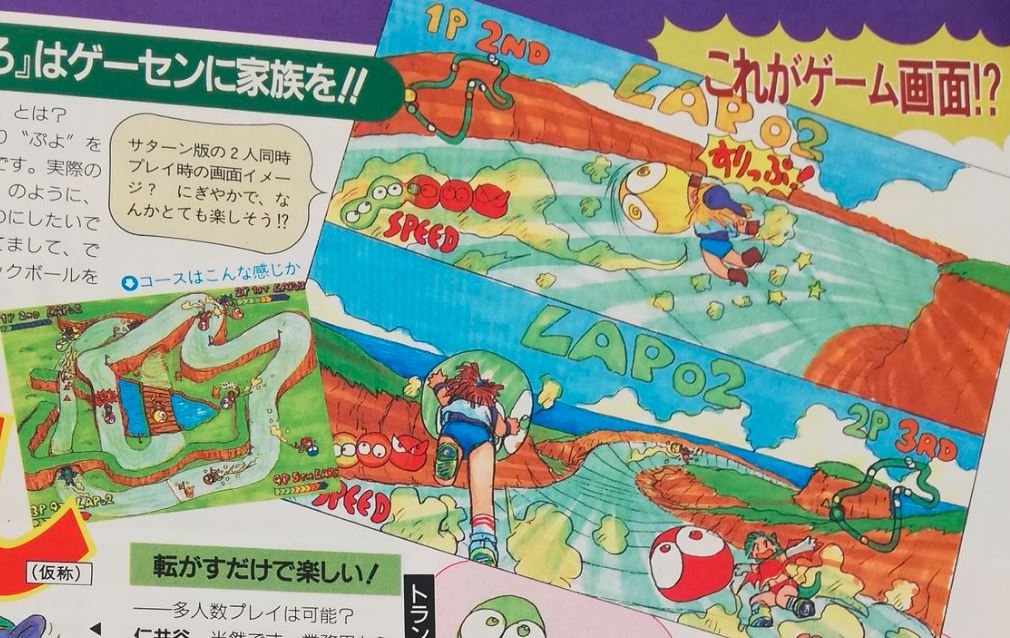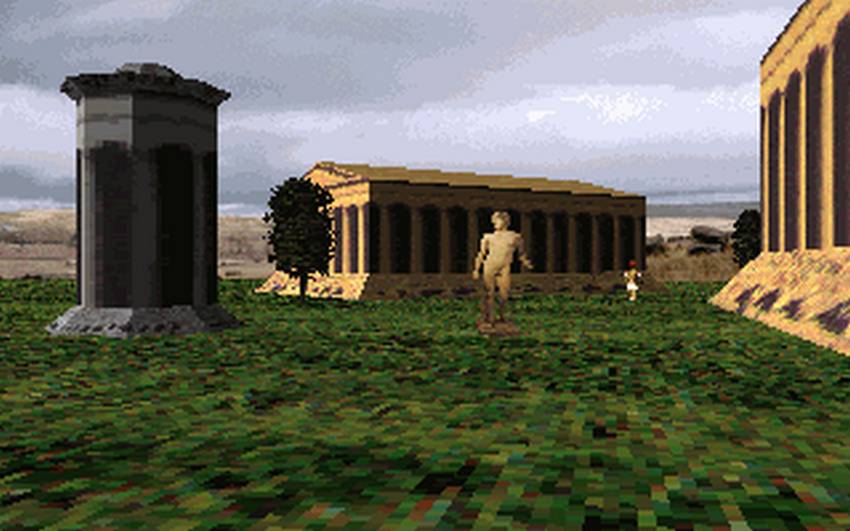Gen13 is a cancelled action game developed around 1997 for the PC, Playstation and Sega Saturn systems, that was going to be published by Electronic Arts and developed by Gray Matter Inc. It was based on the eponymous comic-book franchise.
As we can read on Playstation Museum, a deal between EA and WildStorm Productions was struck in February 1996 in order to make a series of video game based on this licence. High Score Entertainment was tasked to make design documents for EA:
The license granted EA exclusive rights to develop a series of 2-D and 3-D action-adventure interactive entertainment software products based on the Gen13 comic book series for personal computers, Sony PlayStation, Sega Saturn, and other advanced entertainment platforms.
EA’s games will feature the comic book’s seemingly average teenagers – the Gen13 – who are actually missing subjects from a top-secret government experiment to create super-humans. Escaping from their keepers, the youths are labeled as fugitives who pose a national security threat to the United States. Their only hope for survival is to use their newly-found powers to battle their enemies and to learn the secrets of their past. The Gen13 are kids on their own just trying to have fun – when they’re not running from spies or saving the world.
High Score Entertainment, the studio responsible for Madden NFL 95 and NHL 95, were in charge of producing and designing the Gen13 game. The high level concept was that the Gen13 video game will deliver the detail, depth and play-control of Mario, the great platform/shooter dynamic of Earthworm Jim, the hard-core action of Street Fighter and an adrenalizing soundtrack of heart-thumping techno and contemporary modern rock- with all the mind-blowing artwork and spectacular characters that only the Gen 13 universe can offer!
Regarding its gameplay, Gen13 was going to be a mix of vertical shooter, beat ’em up and one-on-one fighting game, with a cooperative mode:
THE GAMEPLAY:
The normal gameplay engine will be similar to that of Earthworm Jim where the player controls at least one of the five different Gen13 characters. There are also “team-up” levels where the AI controls additional players on the screen. In the case of a two-player game, both characters will be actively controlled.In addition to side scrolling fighting/shooting, the engine will be designed to be flexible, allowing for a variety of scenarios such as: vertical shooter, static screen action, zoomed in cinematic sequences, zoomed out view of gameplay, and forced scrolling action.
The boss combat engine will be a dynamic 3-D environment where the characters can cruise around in an arena. The closer the character is to the “boss,” the closer the camera will be. The camera will zoom out respectively when the characters are apart.
CHARACTER DESIGN:
All your favorite Gen13 characters are in the game, each with their own special moves and animation. WildStorm Productions sent EA visual character specifications in order to ensure that the characters are intricately and properly portrayed.The Gen13 characters can’t get by on their good looks and sparkling personalities alone. Throughout the game will be various ways to help the player survive, in the form of traditional gameplay “power-ups.” Of course, Gen13 offers that extra twist: The Ultra Move. The most potent powerup in the game is the “Ultra Move.” Each character has only one “Ultra Move” hidden somewhere in the levels of the game. The “Ultra Move” is the ultimate manifestation of a character’s Gen Active power.
BOSS DESIGN:
The design team asked Jim Lee and J. Scott Campbell to create the bosses for each of the levels. They have also been commissioned to create the mother of all end bosses to climax the Gen13 game. The mother of all bosses will require true teamwork from all of the Gen13 characters in order to defeat. The game ending boss would be introduced in comic form in an upcoming Gen13 series. A possible marketing ploy would be to offer a secret code that is unlocked upon completion of the game that will allow the player to send away for a poster of the mighty end boss.LEVEL DESIGN:
Levels will provide diverse physics and game mechanics to give a variety of challenging gameplay experiences. Levels on skates, on ice, driving vehicles, flying, swimming, or climbing will give the user several types of gameplay to master. The different areas of Gen13 will be truly living and breathing environments. Locations will be chosen not only for good gameplay and storyline, but for exciting and realistic visuals. 25 levels were designed conceptually, many of which were drawn out for the developer. Some of the levels include the Grunge and Freefall traveling to Las Vegas in “Viva Las Vegas”, Fairchild discovering an underground complex under the city in “Down In It”, Grunge saving Freefall from One-Eyed Jack in “No Tut In Common,” and Freefall loose in a shopping mall after hours in “Mall Maul.”BONUS:
Arcade classic bonus games will be hidden throughout the Gen13 game. The games will be spoofs of famous arcade games that are recognized by all. The goal of the bonus games is to score points to earn extra lives.
Once the design documents finished, EA was looking for developers that could have achieved the vision they had for their Gen13 game. Three different game companies made tech demos to show to EA. Those studios were Evolutionary Publishing, Realtime Associates and Gray Matter Inc. Ultimately, Gray Matter was the developer retained by EA.
DEVELOPMENT HISTORY:
With the design documents completed, EA proceeded to entertain bids from possible developers. Potential developers included Evolutionary Publishing (Fox Hunt), Realtime Associates (Crusader: No Remorse, Iron Man & X-O Manowar in Heavy Metal), and Gray Matter Inc. (Perfect Weapon). Each developer submitted technical demos for review. It is important to understand that developers have concurrent projects in progress while technical demos are being created and some have more time and resources to dedicate on this than others. The technical demos are not to be taken as indication of how the resulting gameplay would be.Evolutionary Publishing submitted two progressive interactive technical demos of Rainmaker and Qeelocke. Both demos allowed the user to move the character in a platform environment. The backdrop was from the “Viva Las Vegas” level. The more recent demo allowed Rainmaker to scale the wall of the pyramid in Las Vegas. Evolutionary Publishing decided to utilize 2D sprites for the characters whereas the following two competing developers used 3D models.
Realtime Associates submitted a playable demonstration of their progress in representing Freefall as a real-time rendered 3D model. This demo was put together in less than a week.
Gray Matter Inc. submitted a non-interactive art demo to illustrate the graphics style of the various Gen13 characters including an end boss as well as a fly through to the “Down In It” level. The graphics captured the essence of the design documents and ultimately Gray Matter was chosen as the developer.
But after some months of work, the game was cancelled for economical reasons. Gray Matter shutted down and EA decided to drop the licence.
CANCELLATION:
After just a few months of programming, Gray Matter developed two polished interactive levels, an arena mode, and FMV for both the PlayStation and PC. Three different characters were created for the two side-scrolling levels as well as enemies. Four characters and an enemy Boss were programmed for the Arena mode. Unfortunately the agreement between Gray Matter and Electronic Arts reached an impasse due to business politics. As a result Gray Matter closed down therefore ceasing all projects and all employees losing their jobs. Due to the amount of money spent and the popularity of Gen13 wavering, EA decided it was not financially feasible to engage another developer and instead decided to cut their losses.
Like many other games, over the years, the tech demo made by Realtime Associates and the prototype by Gray Matter leaked onto the internet.
Images:
Evolutionary Publishing’s version:
Realtime Associates’ version:
Gray Matter Inc.’s version:
Videos:
Gen13’s Realtime Associates prototype:
Gen13’s Gray Matter Inc. version:



